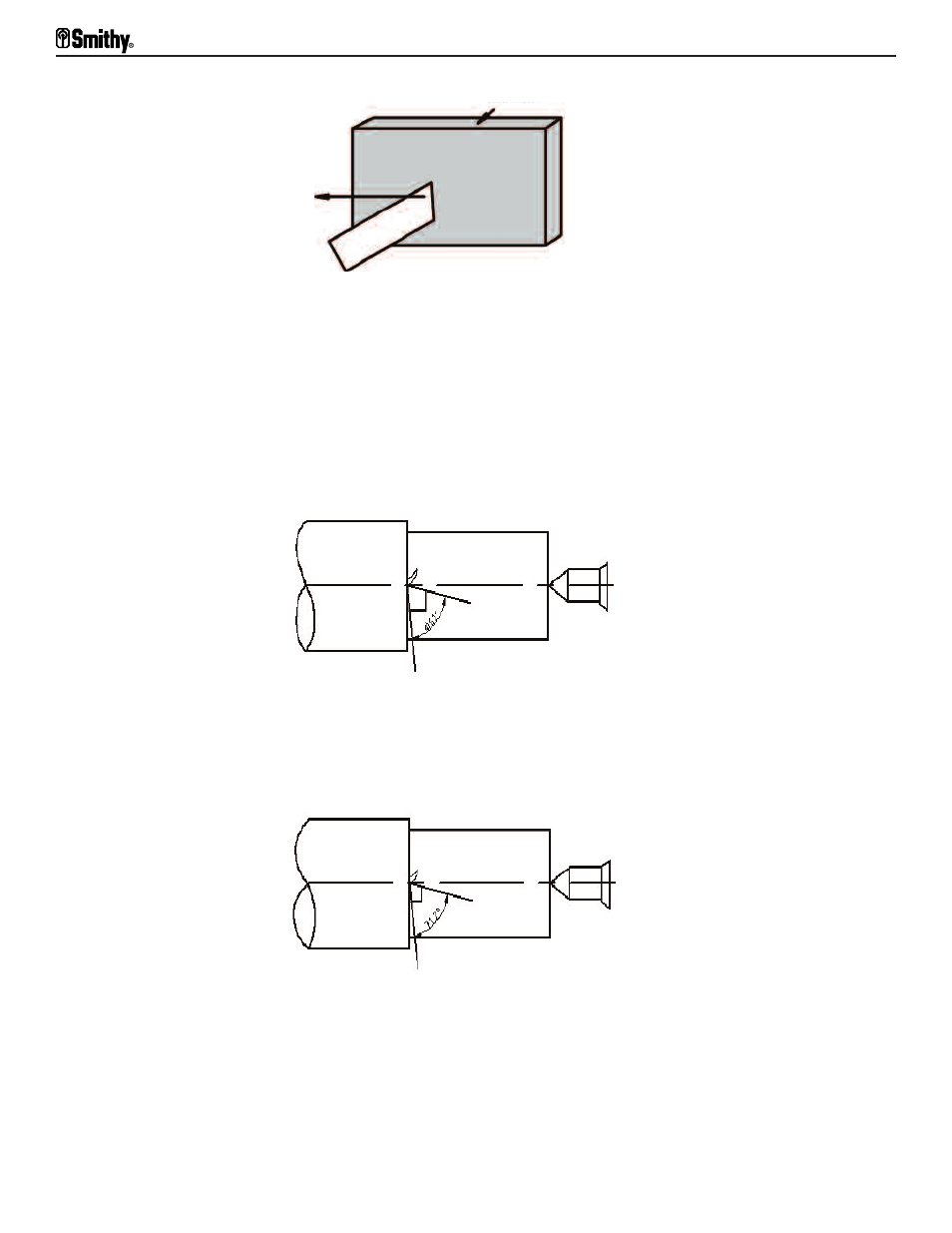Materials other than steel, Bits for turning and machining brass – Smithy Midas 1220 LTD User Manual
Page 38

Figure 8.4 When honing, draw the cutter away from the cutting edge across the oilstone.
Materials Other Than Steel
As pointed out earlier, when grinding HSS cutters, we determine cutting angles primarily
by strength requirements, not keenness requirements. Angles and rakes for general
industrial shop use are established. In machining steel, the softer the steel, the keener
the angle of the cutting edge. For soft steels, angles as acute as 61° are possible.
Figure 8.5 With soft steels, 61 degree angles are possible.
The same general rule applies to cast iron. Chilled or very hard cast iron requires tools
with cutting-edge angles as great as 85°. For ordinary cast iron, you obtain greatest
efficiency with a more acute cutting edge-approximately 71°.
Figure 8.6 With cast iron, a 71 degree angle is most efficient.
Bits for Turning and Machining Brass
Brass tends to pull or drag when machined. It's best to machine it on dead center with
the top rake in the horizontal plane of the lathe centers. Softer than steel, brass needs
less support for the cutting edge. Brass cutters require an almost flat top angle and can
Oilstone
Midas 1220 LTD Operator’s Manual
8-3
For Assistance: Call Toll Free 1-800-476-4849
